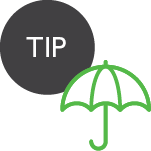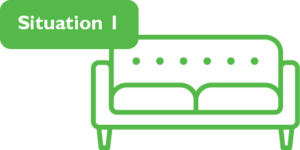If your apartment is furnished in “from my dorm days” furniture …
You’re on your own and most, if not all, of your paycheck is already spoken for, so insurance is not high on your priority list. Two things you can’t ignore: first, you’ve got to have car insurance. The best way to lower your premium cost is to be a safe driver, so keep that in mind when you’re late for work and still 8 blocks away from the office, driving late at night after a long day, or considering taking off at the same time one of our famous Iowa-South Dakota-Minnesota blizzards arrives.
Second, if you have debt, you need life insurance. The good news is at your age a term policy can be really inexpensive and by getting this coverage, you won’t put your parents or young spouse in financial jeopardy if something happens to you.
 Whatever insurance you buy, don’t just renew it every year. Insurance is a highly competitive industry, so shop for deals and discounts before you commit at your renewal date.
Whatever insurance you buy, don’t just renew it every year. Insurance is a highly competitive industry, so shop for deals and discounts before you commit at your renewal date.
If you have 2 kids, 2 cars, 2 student loans, and a mortgage the size of Mt Rushmore …
First, read situation one and make sure you’ve got your vehicles (and the possible liability they carry with them) covered as well as a substantial part of your debt, so if you die, your family can avoid major lifestyle changes for at least a few years.
But that’s not enough. You have kids and a spouse who depend on your paycheck, so providing cashflow for everyday expenses (again, for at least a few years until the family recalibrates) is a must. And when Baby number three comes along, up the ante of your coverage proportionately.
 You’ve heard about bundling, and because you have multiple needs for protection, search for a package of coverages that helps you save money and develop a deeper relationship with one agent.
You’ve heard about bundling, and because you have multiple needs for protection, search for a package of coverages that helps you save money and develop a deeper relationship with one agent.
If you’re a business owner and you’re just updating your coverages rather than upgrading them …
If 2020 has taught us nothing else, it’s brought home the possibility that completely unforeseen and potentially catastrophic events can – and do – happen. On an annual basis, create a “risk list” for your company that itemizes and prioritizes threats, from weather to cybercrime to supply chain issues. At this point, you may need a double espresso.
Next, present this list to at least three potential providers. Ask each to respond and also provide any additional specialty services, i.e., risk-reducing workplace initiatives. Remember, the price of not treating this as a top priority, could be breathtaking.
 Remember, don’t update. Upgrade to meet today and tomorrow’s challenges.
Remember, don’t update. Upgrade to meet today and tomorrow’s challenges.
 If you want to spend a few winter months each year NOT at the farm in Minnesota, your kids are planning to come home and farm with you, and Grandma has decided to move in …
If you want to spend a few winter months each year NOT at the farm in Minnesota, your kids are planning to come home and farm with you, and Grandma has decided to move in …
So much responsibility can almost always be best managed by a team. Consider starting with your banker and their ag team to determine your two- to three-year business plan, which will identify your goals, expected expenses, and risk mitigation needs. Providing that risk mitigation is the job of your insurance agent, and you want choices, e.g., minimum, medium and maximum options for you to consider.
Be sure to consider your ability to self-insure. The more savings you have the more risk you can tolerate. If savings are sparse, your coverages need to make up the difference.
 Communicate. You have the future of a lot of people in your hands, and a monthly conversation to keep all stakeholders minimizes the potential for negative surprises.
Communicate. You have the future of a lot of people in your hands, and a monthly conversation to keep all stakeholders minimizes the potential for negative surprises.
 Need some questions answered or friendly advice?
Need some questions answered or friendly advice?
Dial 833.634.1304 to talk to our personal customer service team or take a look at the coverage available for your personal, business, and farm needs. After hours? Click the link below and we’ll contact you.
Request a call back from an insurance professional



